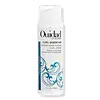What's inside
What's inside
 Benefits
Benefits

 Concerns
Concerns

 Ingredients Side-by-side
Ingredients Side-by-side

Water
Skin ConditioningCetearyl Alcohol
EmollientGlycol Stearate
EmollientCetyl Alcohol
EmollientParfum
MaskingDimethicone
EmollientBehentrimonium Methosulfate
Ceteareth-20
CleansingArgania Spinosa Kernel Oil
EmollientHydrolyzed Vegetable Protein Pg-Propyl Silanetriol
Skin ConditioningPPG-1 Trideceth-6
Skin ConditioningPolyquaternium-11
Polyquaternium-37
Polyquaternium-72
Propylene Glycol Dicaprylate/Dicaprate
EmollientButylene Glycol
HumectantCaprylyl Glycol
EmollientC10-40 Isoalkylamidopropylethyldimonium Ethosulfate
Disodium EDTA
Sodium Chloride
MaskingPotassium Sorbate
PreservativeChlorphenesin
AntimicrobialPhenoxyethanol
PreservativeEugenol
PerfumingAlpha-Isomethyl Ionone
PerfumingButylphenyl Methylpropional
PerfumingLinalool
PerfumingHydroxyisohexyl 3-Cyclohexene Carboxaldehyde
MaskingWater, Cetearyl Alcohol, Glycol Stearate, Cetyl Alcohol, Parfum, Dimethicone, Behentrimonium Methosulfate, Ceteareth-20, Argania Spinosa Kernel Oil, Hydrolyzed Vegetable Protein Pg-Propyl Silanetriol, PPG-1 Trideceth-6, Polyquaternium-11, Polyquaternium-37, Polyquaternium-72, Propylene Glycol Dicaprylate/Dicaprate, Butylene Glycol, Caprylyl Glycol, C10-40 Isoalkylamidopropylethyldimonium Ethosulfate, Disodium EDTA, Sodium Chloride, Potassium Sorbate, Chlorphenesin, Phenoxyethanol, Eugenol, Alpha-Isomethyl Ionone, Butylphenyl Methylpropional, Linalool, Hydroxyisohexyl 3-Cyclohexene Carboxaldehyde
Water
Skin ConditioningPolyquaternium-37
Propylene Glycol Dicaprylate/Dicaprate
EmollientPhenyl Trimethicone
Skin ConditioningC12-15 Alkyl Benzoate
AntimicrobialHydrolyzed Silk
HumectantPrunus Amygdalus Dulcis Fruit Extract
Skin ConditioningSilybum Marianum Extract
Skin ConditioningGlycine Soja Seed Extract
Skin ConditioningHydrolyzed Vegetable Protein
Skin ConditioningIsodecyl Oleate
EmollientDecyl Oleate
EmollientPolyquaternium-11
Cetrimonium Chloride
AntimicrobialPPG-1 Trideceth-6
Skin ConditioningPolyquaternium-46
Propoxytetramethyl Piperidinyl Dimethicone
Glycerin
HumectantDipropylene Glycol
HumectantC11-15 Pareth-7
EmulsifyingTrideceth-6
EmulsifyingCinnamidopropyltrimonium Chloride
Guar Hydroxypropyltrimonium Chloride
Skin ConditioningQuaternium-80
Bisamino PEG/PPG-41/3 Aminoethyl Pg-Propyl Dimethicone
Propylene Glycol
HumectantAminomethyl Propanol
BufferingCitric Acid
BufferingIodopropynyl Butylcarbamate
PreservativeDMDM Hydantoin
PreservativeButylphenyl Methylpropional
PerfumingBenzyl Salicylate
PerfumingLinalool
PerfumingLimonene
PerfumingHexyl Cinnamal
PerfumingAlpha-Isomethyl Ionone
PerfumingParfum
MaskingWater, Polyquaternium-37, Propylene Glycol Dicaprylate/Dicaprate, Phenyl Trimethicone, C12-15 Alkyl Benzoate, Hydrolyzed Silk, Prunus Amygdalus Dulcis Fruit Extract, Silybum Marianum Extract, Glycine Soja Seed Extract, Hydrolyzed Vegetable Protein, Isodecyl Oleate, Decyl Oleate, Polyquaternium-11, Cetrimonium Chloride, PPG-1 Trideceth-6, Polyquaternium-46, Propoxytetramethyl Piperidinyl Dimethicone, Glycerin, Dipropylene Glycol, C11-15 Pareth-7, Trideceth-6, Cinnamidopropyltrimonium Chloride, Guar Hydroxypropyltrimonium Chloride, Quaternium-80, Bisamino PEG/PPG-41/3 Aminoethyl Pg-Propyl Dimethicone, Propylene Glycol, Aminomethyl Propanol, Citric Acid, Iodopropynyl Butylcarbamate, DMDM Hydantoin, Butylphenyl Methylpropional, Benzyl Salicylate, Linalool, Limonene, Hexyl Cinnamal, Alpha-Isomethyl Ionone, Parfum
Ingredients Explained
These ingredients are found in both products.
Ingredients higher up in an ingredient list are typically present in a larger amount.
Alpha-Isomethyl Ionone is a fragrance. It can be synthetically created or naturally occurring.
The scent of Alpha-Isomethyl Ionone is described as "flowery" but can also be "woody".
Naturally occurring Alpha-Isomethyl Ionone may be found in Saccharomyces cerevisiae, or the yeast used to make wine and bread.
The term 'fragrance' is not regulated in many countries. In many cases, it is up to the brand to define this term. For instance, many brands choose to label themselves as "fragrance-free" because they are not using synthetic fragrances. However, their products may still contain ingredients such as essential oils that are considered a fragrance.
Learn more about Alpha-Isomethyl IononeButylphenyl Methylpropional is a synthetic fragrance. You might know it as "lilial". The scent of this ingredient is floral-like and similar to the scent of lily flowers.
In March of 2022, the EU banned this ingredient in both rinse-off and leave-on products. This is because research found Butylphenyl Methylpropional to disrupt fertility in rats.
This ingredient is also a known EU allergen, meaning it is likely to cause an allergic reaction. Irritated skin can be damaging.
We always recommend speaking with a professional if you have any concerns or questions about this ingredient.
Learn more about Butylphenyl MethylpropionalLinalool is a fragrance and helps add scent to products. It's derived from common plants such as cinnamon, mint, citrus, and lavender.
Like Limonene, this ingredient oxidizes when exposed to air. Oxidized linalool can cause allergies and skin sensitivity.
This ingredient has a scent that is floral, spicy tropical, and citrus-like.
Learn more about LinaloolParfum is a catch-all term for an ingredient or more that is used to give a scent to products.
Also called "fragrance", this ingredient can be a blend of hundreds of chemicals or plant oils. This means every product with "fragrance" or "parfum" in the ingredients list is a different mixture.
For instance, Habanolide is a proprietary trade name for a specific aroma chemical. When used as a fragrance ingredient in cosmetics, most aroma chemicals fall under the broad labeling category of “FRAGRANCE” or “PARFUM” according to EU and US regulations.
The term 'parfum' or 'fragrance' is not regulated in many countries. In many cases, it is up to the brand to define this term.
For instance, many brands choose to label themselves as "fragrance-free" because they are not using synthetic fragrances. However, their products may still contain ingredients such as essential oils that are considered a fragrance by INCI standards.
One example is Calendula flower extract. Calendula is an essential oil that still imparts a scent or 'fragrance'.
Depending on the blend, the ingredients in the mixture can cause allergies and sensitivities on the skin. Some ingredients that are known EU allergens include linalool and citronellol.
Parfum can also be used to mask or cover an unpleasant scent.
The bottom line is: not all fragrances/parfum/ingredients are created equally. If you are worried about fragrances, we recommend taking a closer look at an ingredient. And of course, we always recommend speaking with a professional.
Learn more about ParfumWe don't have a description for Polyquaternium-11 yet.
We don't have a description for Polyquaternium-37 yet.
We don't have a description for PPG-1 Trideceth-6 yet.
Propylene Glycol Dicaprylate/Dicaprate is a mixture of Propylene Glycol Dicaprylate and Propylene Glycol Dicaprate.
It is an emollient and helps hydate the skin.
Water. It's the most common cosmetic ingredient of all. You'll usually see it at the top of ingredient lists, meaning that it makes up the largest part of the product.
So why is it so popular? Water most often acts as a solvent - this means that it helps dissolve other ingredients into the formulation.
You'll also recognize water as that liquid we all need to stay alive. If you see this, drink a glass of water. Stay hydrated!
Learn more about Water